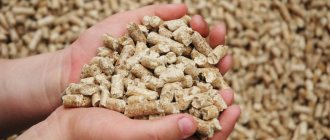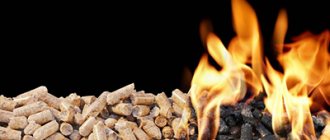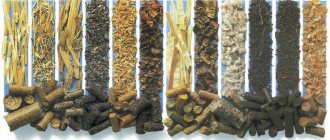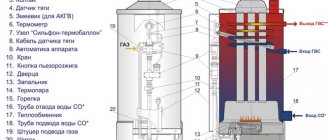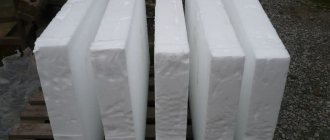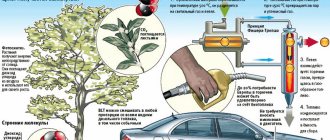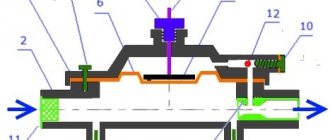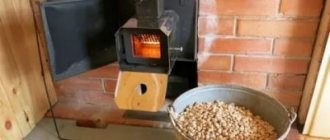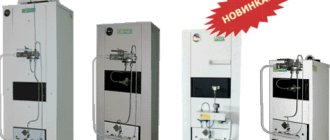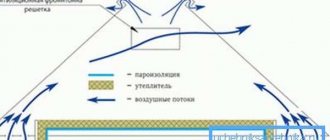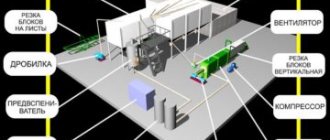Gas and electricity are constantly becoming more expensive, so many owners of private houses choose other heat sources for heating their homes. Popular and cheap materials include pellets made from sawdust. In addition, you can make them yourself. This fuel is biologically pure and is sold in granular form. Pellets are made from wood waste. Equipment for the production of pellets can be purchased or built independently.
Types of pellets
Such fuel is made from various biomass. However, one condition is imposed on it - high energy value. In addition, the material should be easy to crush and press. Pellets made from sawdust, bark and wood chips are very popular. Such materials are obtained at woodworking enterprises.
Vegetable granules are produced by processing straw and sunflower husks. Peat granules and pellets, based on chicken manure, are not very popular.
Conditions of storage and use
When purchasing a large batch of pellets, you need to take care of where they are stored. When stored indoors, they should not be placed near open sources of fire. It is also necessary to protect the material from its worst enemy - dampness.
How to store pellets if there is no space in the house? Closed bags/packages can be placed outside under a canopy. However, this option is undesirable - when it rains, the risk of the packaging getting wet and irreversible damage to the fuel increases.
A few words about how to properly heat a solid fuel boiler with pellets. This requires a burner, which can be purchased separately and installed on the boiler literally within half an hour. The operation of such a tandem is extremely simple - the user will need to fill the hopper with fresh pellets from time to time and clean out the ash. The temperature balance is controlled using the control panel.
Fuel pellets are an economical, affordable, efficient solid fuel. And, although the cost of a special pellet burner is quite high, within no more than 1 year the investment in the equipment will fully pay off.
Wood pellets
If you completely replace traditional fuels with wood pellets, you can significantly reduce the greenhouse effect. When traditional fuels burn, a lot of carbon dioxide is released into the air. The least amount of carbon dioxide is produced when wood is burned.
When using wooden pellets, the emission of compounds such as sulfur dioxide into the atmosphere is reduced. It is because of its formation that acid rain falls in large quantities. This has a detrimental effect on the environment. The danger to nature and humans when using fuel pellets is reduced to zero.
How to calculate pellet consumption
Considering the fact that fuel is supplied in bulk or packaged in bags, it is, in principle, not difficult to calculate the consumption of pellets per 1 kW or per 1 m2. There is no need to convert weight units into volume, since delivery always occurs in kilograms, and the heat of combustion of fuel is also measured in kW per 1 kg of weight.
Good quality granules have excellent calorific value; burning 1 kg of such fuel produces almost 5 kW of thermal energy. Accordingly, to get 1 kW of heat for heating a house, you need to burn about 200 grams of pellets. The average consumption of granules per unit area can be easily determined based on the fact that heating each 1 m2 of area requires 100 W of energy
One condition is important: the ceiling height should be within 2.8-3 m. 100 W of heat will be obtained from 20 grams of granules, it would seem simple arithmetic
But it was not there. The figures presented above are correct if the pellet boiler has absolute efficiency - 100% efficiency, but this does not happen in real life. In fact, the efficiency of such heat generators, although higher than that of solid fuel boilers, is still only 85%. This means that after burning 1 kg of pellets in the furnace of the unit, not 5 kW of energy will be obtained, but 5 x 0.85 = 4.25 kW. Conversely, to release 1 kW of heat in pellet boilers, 1 / 4.25 = 0.235 kg or 235 grams of fuel is consumed. This is the first point.
The second nuance is that 100 W of heat per 1 m2 of room is required when the ambient temperature is the lowest, which lasts for 5 days. On average, during the heating season, thermal energy consumption is half as much. This means that the specific heat transfer per unit area is only 50 W. Determining the consumption of pellets in a pellet boiler for 1 hour relative to 1 m2 will be incorrect; the figure will be small and inconvenient. It would be more correct to calculate the weight of pellets burned per day.
Since Watt is a unit of power per 1 hour, then per day for each square of the room you will need 50 W x 24 hours = 1200 W or 1.2 kW. For this purpose, you will need to burn the following mass of pellets per day:
1.2 kW / 4.25 kW/kg = 0.28 kg or 280 grams.
Knowing the specific fuel consumption, we can finally obtain values useful for financial calculations, for example, the average seasonal weight of pellets used per day and per month in a house with an area of 100 m2:
- per day - 0.28 x 100 = 28 kg;
- per month – 28 x 30 = 840 kg.
It turns out that 8.4 kg of fuel is needed per month to heat 1 m2 of a building. At the same time, according to user reviews on various forums, heating a well-insulated house of 100 m2, located in the middle zone, takes about 550 kg of pellets, which in terms of square footage is 5.5 kg/m2. This means that the consumption of pellets in the boiler in the amount of 840 kg per month for a building of 100 m2 is very large and suitable for calculations of poorly insulated houses.
Let us summarize some results in the form of calculation results for dwellings of various sizes. The following are the monthly costs of pellets for heating a private home:
- 100 m2 – 840 kg with poor insulation, 550 kg for good thermal insulation;
- 150 m2 – 1260 kg and 825 kg, respectively;
- 200 m2 - 1680 kg and 1100 kg under the same conditions.
For reference. In many boiler installations, the controller has a function that allows you to see on the display the consumption of pellets in kilograms over a certain period.
Benefits of wood pellets
In addition to a high degree of environmental friendliness, wood pellets have a lot of useful properties:
- High heat transfer compared to bark, boards or wood chips.
- When storing, you will need half the space than with regular wood.
- Since pellets do not have biological activity, they can be stored near residential premises.
- Making such fuel yourself is not difficult. Pellets cannot spontaneously ignite. Due to their fairly dense structure, they are safe for allergy sufferers.
- When making pellets, no adhesives or thickeners are added to the granules.
- Thanks to the use of this fuel, it becomes possible to effectively use any type of waste.
- Compared to coal, wood pellets produce the same amount of heat with lower carbon emissions.
The cost of heating when choosing wooden pellets is quite low.
Criteria for choosing a pellet boiler and pellets
Pellet heating has a lot of nuances, so you should approach the choice responsibly. First you need to decide on fuel: how much it costs, where to get it. The profitability of heating is observed in the presence of cheap fuel.
Pellet heating boilers for the home are purchased when it is impossible or unwilling to equip another system. Among the advantages are their environmental friendliness. When choosing a boiler, you should decide in advance on its power and functionality.
Rules for choosing pellets:
- Proper manufacturing eliminates chemicals from pellets;
- Wood pellets burn better;
- You should choose the lightest possible fuel; dark pellets are considered low-grade;
- During physical effort, the pellets should break easily;
- After combustion, the pellets should leave a minimum amount of waste.
The choice of boiler can be made in favor of a conventional solid fuel unit. You can install a pellet burner in such a system and this home heating system is ready. All that remains is to calculate the required amount of fuel for the season.
Use of wood pellets
Today there may be several main types of wood pellets. They are divided into fuel for industrial use and heating of private homes. You can make pellets at home with a low ash content. At the same time, there will be very little bark in them.
Fuel for industrial use is of lower quality. Wood pellets are burned in special boilers. Combustion in such equipment is carried out under conditions of constant oxygen supply. Many modern automatic boilers are designed in such a way that new batches of pellets enter them every 20 minutes.
Pellets consumption for heating a house
Recently, many owners of private houses use pressed pellets made from waste of a wide variety of combustible materials to heat the premises of their homes. These granules are called pellets. Those homeowners who are just planning to install hot water boilers in their home that use pellets as fuel are interested in the consumption rates of this fuel material, as well as the amount of heat released during its combustion. We will try to cover these issues in as much detail as possible within the confines of this short article. As a rule, the choice of one or another type of solid fuel boiler is based on the availability and cost of fuel. In addition, many owners of private houses try to choose equipment that requires minimal maintenance. In other words, there is no need to fill the firebox every day, remove combustion products, etc. Therefore, among a wide range of types of boilers operating on solid fuel, pellet equipment is the most in demand.
Stages of pellet production
There are several stages in the production of wood pellets. First, the initial crushing of the biomass is carried out. Then the following steps are performed:
- Drying of raw materials after crushing.
- Fine crushing.
- Then the dry base is saturated with water or steam.
- The pellets are pressed.
- The product is then cooled.
- Pellets are packaged in packages.
Each of the stages of pellet production should be considered in more detail.
Initial pellet crushing
At the first stage of pellet production, the raw materials are fed into crushers. This is necessary for the initial grinding of biomass. The output is material with a fraction of no more than 25x25 mm. Thanks to these sizes, raw materials can be dried normally in special units. Then the raw material is further crushed.
Drying of crushed raw materials
Waste that is too wet does not compact well. If you make pellets from them, they will not be intended for subsequent combustion. For this reason, drying is an essential step in the pellet manufacturing process. Thanks to this, the moisture in the sawdust becomes 12% less. As a result, the starting material for the production of pellets must have a moisture content of about 10%.
The equipment in which sawdust is dried is represented by drum or belt units. They are selected depending on the desired result and the type of available raw materials for pellets.
However, drying is a rather energy-intensive process. To fully dry one ton of sawdust, it is necessary to burn one cube of wood fuel. Please note that burning boards or logs is quite expensive. For this reason, many manufacturers choose bark or sawdust for this purpose.
Fine crushing
The raw material that is selected for the production of pellets should not be more than 4 mm. For this reason, a special installation is used for crushing. In it, the source material is crushed to the required size.
A good product leaving the crushing plant should be approximately 150 kg per cubic meter. m. Hammer-type mills are more suitable equipment that can provide high-quality grinding of sawdust or wood chips.
Water treatment of pellets
Sometimes the raw materials dry out too much. As already noted, the optimal moisture content of raw materials for pellets is 10%. If this parameter drops to 8%, the material begins to stick poorly.
To increase the humidity to the desired level, the raw materials must be placed in a certain tank. It saturates the material with water vapor. Steam is used to saturate hardwood sawdust with moisture. To process soft ones, you do not need to use special units. Just add water to the mixer.
Pellet pressing
After the pressing process, small cylinders are obtained from the available biomass. They have a diameter from 6 to 25 mm. The material, which has already been prepared, is fed into the press. Such equipment can be equipped with cylindrical or flat matrices. As a result, the material is significantly compressed. This increases the temperature of the biomass. In addition, the process releases lignin, due to which sawdust or wood chips stick together.
Cooling
During pressing, the temperature of the granules rises to 70-90 degrees. Therefore, the material must subsequently be cooled and dried. The pellets are then placed into packages. In professional production conditions, special machine tools and granulators are used.
Pellet packaging
Quite often, wood pellets are stored in bunkers. To protect the final product, it is packaged in large bags. The consumer receives the product in 20 kg bags. Despite the cheapness of biological fuel, many owners of private houses decide to make pellets themselves.
Pellets for heating types and features of use
Pellets are a worthy competitor to diesel fuel, coal and firewood. These are small cylindrical granules that are used for combustion in specialized heating boilers. This type of fuel has been used successfully in Europe for a long time. This is facilitated by environmental friendliness (these are compressed waste from woodworking and crop production) and the ability to automate the heating process: the granules are free-flowing, which makes it possible to store them in tanks and automatically feed them into the boiler as needed. The diameter of pellets used for domestic boilers is 6–8 mm; in industrial boilers larger pellets with a diameter of up to 10 mm are burned. The length can generally be from 5 to 70 mm.
How wood pellets are made from wood
For the production of pellets, the most inexpensive wood is taken, which cannot be used for any other purpose. These are scraps, wood chips, sawdust. This waste is sorted, cleaned of impurities, sand is sifted out, etc. Next, a powerful magnet used on the sorting belt attracts iron (such as nails). After removing foreign objects, the wood waste is sent to a hammer crusher, where it is crushed to 4 mm fragments. This stage is called pre-grinding. It is necessary for uniform drying of the raw materials at the next stage.
Pellets are also made from wood processing and agricultural waste
The resulting sawdust is dried in a special hopper to the required humidity (8–12%). After which they are sent for re-grinding. The result is small fragments of wood, which, after being brought to the ideal humidity (10%), are sent to a granulator press. Here, under pressure (in some presses, high temperature), sawdust is converted into pellets. To do this, the composition is passed through a matrix in which round holes are cut. The design of the granulator press resembles a regular meat grinder: the dough is pressed through the holes, and granules are obtained. They are cooled in the cooling column. This is how the final product is obtained - fuel pellets.
Types and raw materials used
If we classify pellets by grade, then there are three types:
Industrial - have a gray-brown color, their ash content percentage is higher than 0.7. This is explained by the fact that the wood from which they are made has not been debarked. That is, a large amount of bark gets into the granules, giving an increased percentage of ash content. It is worth considering that the use of industrial pellets in a domestic boiler can lead to its breakdown: not all burners can operate with fuel with a high ash content. But they can cost 50% less, and this is a decent saving. If your boiler burns this type of pellets without any problems, you can use them, but you will have to clean it more often.
Industrial pellets cannot always be used in domestic boilers
Agropellets are more often used in industrial boiler houses
White pellets are an ideal fuel for domestic pellet boilers
What are they made from?
Any raw material containing lignin is suitable for making pellets. The most common raw material in Russia is wood, and coniferous species are used more often, despite the fact that deciduous species produce higher quality fuel. The popularity of coniferous species is explained by the fact that the processing of hardwood requires more complex and expensive equipment: almost all hardwoods do not press very well, therefore more powerful equipment is required; it is often necessary to experimentally select the processing/moistening/pressing mode, which takes time and money . Moreover, the cost of pellets when sold on the domestic market depends only slightly on the material.
The raw materials for the production of pellets are any combustible waste
What is the difference between birch pellets and coniferous ones? Birch pellets have a slightly higher heat release during combustion than coniferous pellets, but the difference is small. But when burning birch, there are no resins, which, with prolonged use of pine, settle in the chimney, which requires cleaning it.
Agropellets are often made from straw. Although the heat transfer of such pellets is less than that of wood pellets, they are much cheaper. Among agropellets, granules made from rapeseed straw have greater heat transfer. Sunflower husk pellets are excellent competitors to brown coal granules. They have many advantages: husk granules are cheaper, their ash content is many times lower, and they emit more heat, and husk ash is environmentally friendly, which is an excellent fertilizer for agricultural crops.
Do-it-yourself pellet production
A fairly large number of consumers, after analyzing all the advantages of wood pellets, decide to make them themselves. You can even build a homemade machine that can make your work much easier.
Mobile granulators can also be found on sale. They are presses. Thanks to this, you can equip your own pellet production line. Raw materials must meet the stated requirements. You can assemble a pellet granulator with your own hands using a simple scheme.
Since wood pellet technology involves processing waste, it is necessary to fully understand the process. First, large pieces of wood must be crushed into smaller ones. Various wood processing waste can be used as feedstock.
Today, almost every owner of a private home can buy a small crusher. After grinding the material, fine particles are obtained, which can subsequently be used to create pellets.
It is important to monitor the moisture content of the raw materials for pellets. The maximum threshold for this indicator is 12%. However, such waste can only be obtained by crushing dry waste from wood production. In other cases, humidity can be 40-50%. In some cases, people don't think about it, judging the moisture content of sawdust by its appearance.
However, when using pellets that have been produced from raw material, the boiler will only operate at 50% of its capacity. In addition, when such pellets are burned, heating equipment becomes covered with soot from the inside. Therefore, determining the moisture content of the material and subsequent drying are important stages in the production of pellets.
Most often, the feedstock has a moisture level of 40-50%. The material is dried in special devices, depending on the preferences and capabilities of the home owner:
- aerodynamic dryer;
- dryer drum;
- belt dryer;
- dispersant.
Without going into the specifics of operating such devices, you should remember that in order for moisture to evaporate from the wood, it will need to be heat treated. In any case, the owner of a small pellet production will have to make a homemade drying installation and spend money on energy to heat it up.
At the next stage of work, the material is compressed, followed by the formation of granules. This procedure is performed using special equipment – a granulator press. The main part of the device is the matrix. Each of these devices is equipped with a powerful electric motor.
In industry, the granulator is equipped with a cylindrical matrix. In such a unit, the starting material is fed into a cylinder, which has many holes. Then the raw materials are pressed with rollers.
Under significant pressure, the sawdust begins to take the shape of holes made in the wall of the drum. They become hardened pellets. Using a cutting knife, the material pushed out is cut off. Thanks to this, the pellets are the same size.
If production is carried out in small volumes, it is better to choose a press with a flat matrix. In this case, the source material is poured from above onto a special disk in which holes are made. From above it experiences the pressure of the rollers. The material located between these parts is pressed and falls into the container below.
This design is easy to assemble with your own hands. Many home craftsmen use this. To do this, you need to purchase a matrix and an electric motor. Then these parts should be fixed on a frame made of metal profile. Then drive pulleys and a hopper are installed, into which the finished pellets will be sent.
Important! Do-it-yourself pressing units rarely have high productivity. In order not to be near them with a container for collecting pellets, you can install an additional conveyor that will supply the resulting raw materials from the bunker.
Heating a private house with pellets: pros and cons
A solid fuel pellet boiler for a home with automatic fuel supply, like any other heating option, has both its advantages and disadvantages. Consideration of the pros and cons helps to make the most reasonable decision regarding the advisability of equipping a boiler room with wood pellet equipment.
The disadvantages are the following:
- Dependence on pellets – a few years ago, good quality pellets were difficult to obtain, which significantly affected the cost of fuel. Today, purchasing pellets of plant or wood origin is not difficult. Refilling a pellet boiler lasts for several hours, days or even months, depending on the chosen model. The user is required to calculate the operating time and purchase the necessary fuel in advance.
- High installation cost. Another disadvantage pointed out by opponents of pellet equipment is its high cost and expensive repairs. Today, the price of equipment is gradually declining due to high market saturation.
The reasons for purchasing pellet equipment are:
- Economical - fuel costs are slightly higher than for a gas boiler, but if you take into account the cost of obtaining permits, the need to prepare design documentation, and pay for gas pipeline installation, the difference becomes not so obvious. Economical pellet boilers for home use less raw materials than convection and gas-generating solid fuel units. Heating costs are also lower compared to an electric boiler.
- Simple installation requirements - the boiler is installed fairly quickly. Combined systems with an integrated fuel tank simply need to be connected to the power supply network and a chimney installed.
- Versatility - most modern models manufactured by domestic manufacturers are capable of using, in addition to pellets, firewood, coal, wood waste, and after replacing the burner, can be converted to use liquid fuel.
- Backup heat sources - an automatic pellet boiler, often has a built-in heating element for heating the coolant. If the solid fuel runs out, the boiler automatically switches to using electricity and continues to heat the house until the pellets are refilled.
Having weighed all the pros and cons of purchasing pellet equipment, many buyers come to the conclusion that it is advisable to purchase a heat generator of this type.
conclusions
We can conclude that independent production of pellets for your own needs is a fairly profitable investment, but only in two cases: when an effectively functioning granulator is assembled, and it is possible to purchase raw materials cheaply.
Recommended Posts
Do-it-yourself laundry box
Features and application of clamp scaffolding
How to make a concrete cellar with your own hands
Projects of houses made of rounded logs with an attic
How deep should a drinking water well be drilled?
TV Ceiling Bracket
Operating principle of automatic pellet boilers
Hoval pellet boiler in section.
An automatic pellet boiler is a steel or cast iron heating unit, which, from a design point of view, is the same solid fuel boiler, but with the ability to fully automate the work process, i.e. it can function with minimal human intervention.
The principle of operation of a pellet boiler is the sequential interaction of 3 separate systems (a bunker for storing reserves, a mechanism transporting pellets into the combustion chamber and the burner itself), combined into a single device by the ACU attachment - a hardware control unit.
Accordingly, the equipment operation process includes 3 stages:
- Supply of pellets from a bunker or from a fuel storage to the combustion chamber.
- Ignition, achieving the required temperature and maintaining combustion.
- Regular cleaning, including removal of ash and carbon deposits from device elements.
From the storage, the granules are delivered to the boiler bunker.
The dispenser supplies the required amount of granules into the combustion chamber. The pellets ignited by the burner heat the water circuit. In general, automatic pellet boilers designed for domestic use are very easy to maintain. The main thing is to initially correctly set the appropriate operating mode, so that later you can turn the heating on and off with one button and simply monitor the number of pellets.
Pellet feeding system
The organization of an automatic pellet supply system directly depends on many factors (design features of the heat generator model, availability of free space in the room, financial capabilities, as well as other personal preferences) and can be carried out in several ways:
- bulk (spontaneous) - pellets fall into the burner under their own weight, which can only be realized from the built-in hopper;
- pneumatic (vacuum) – supply occurs using a powerful pump that can suck pellets even from another room (up to 30 meters);
- screw (worm) - the intake of granules is realized through a gear-screw mechanism, which involves the portion supply of new batches;
- conveyor (conveyor) – fuel is supplied via a standard (> 45°) or steeply inclined (< 45°) “endless” belt with blades.
An example of organizing the supply of granules using a vacuum method from an outdoor bin.
In addition, for greater ease of installation, the above options can be subject to various modifications and can also be combined with each other.
One load of pellets can be enough for a fairly long period - from 2-4 days to 1-3 months, up to the entire heating season (depending on the volume of the built-in or separate bunker). At this time, the ABU controller itself assesses the situation and ensures uninterrupted operation of the heat generator.
Ignition and combustion maintenance
After pressing the start button, the electric ignition system is activated:
- The glow plug (or heating element) ignites the fuel, and the flame sensor turns on.
- The fan pumps air and creates a stable combustion torch.
- The photo sensor detects the presence of a flame and the glow plug is turned off.
- The boiler switches to heating mode and pellets are regularly supplied to the burner.
- When the temperature reaches 60–70 °C, the maintenance mode is activated.
- The volume of incoming air and the pellet supply speed are reduced.
- When the temperature drops (sharp cold snap), heating begins again.
- The burner will periodically turn on/off in the specified mode.
The fully automated pellet boiler is also equipped with a temperature limiter and a coolant overheating sensor. When the supply of a new batch of fuel to the burner is stopped, the system goes into afterburning mode - the fan burns out the residues for 5–10 minutes at full speed.
Stopping work can be done by manually pressing the “Stop” button or (in case of any error) by a software command from the device. Modern GSM modules make life even easier: they synchronize with mobile gadgets and immediately notify about an emergency shutdown, the end of pellets, etc.
Removing ash and carbon deposits
The frequency of servicing heating equipment, i.e. removing carbon deposits and ash remaining from burning pellets, depends on the degree of its equipment:
- model without automatic cleaning – once every 3–10 days;
- model with self-cleaning function – once every 4–6 weeks
That is, the built-in self-cleaning system does not completely eliminate the need for manual cleaning, but only allows you to significantly reduce its frequency.
Boiler unit with automatic cleaning system.
Automatic ash removal occurs through the transportation of burnt-out residues into a voluminous outer container using a screw conveyor. When stirred, the ash is compacted, which saves space in the ash pan. The drive of this mechanism can operate either from the controller of the boiler itself or autonomously.
Automatic removal of carbon deposits from the burner is carried out using knives - moving parts of the grate. In fact, they simply cut off the charred resin particles and direct them to the ash bin. When it is full, the consumer is given a signal about the need to clean it.
Reviews of household automatic pellet boilers: advantages and disadvantages
Reviews from owners of automatic pellet boilers indicate that this technique has both strengths and weaknesses, or rather, nuances:
| Advantages | Flaws |
| autonomy – equipment with a GSM module can remain unattended for weeks | cost – the price of even the most modest options is 100–120 thousand rubles. |
| versatility - work on wood chips, husks and sawdust | energy dependence , a backup generator is needed for operation |
| Convenience – self-cleaning and auto-feeding minimize manual maintenance | service - many foreign companies simply do not have a representative office in Russia |
| safety – the body does not heat up, which is especially important for children and animals | granule consumption - often real figures differ from theoretical calculations |
| cleanliness - there are no traces of use in the room, i.e. soot, dust and smoke | fuel price - the cost of pellets exceeds the cost of firewood or coal |
Reference . An unexpected increase in pellet consumption is often associated with inadequate quality of the product itself: if they contain foreign impurities or their moisture content is more than 10–12%, then in order to maintain a given regime it becomes necessary to compensate for the loss of heat capacity in quantity.
The best known manufacturers and models: characteristics and prices
When choosing a pellet boiler with automatic feeding, you need to focus not only on the technical characteristics, but also on the manufacturer, since not everyone will be able to ensure timely delivery of replacement parts, as well as provide a specialist for installation, configuration and warranty service.
Therefore, in order not to be left without heating at the wrong moment, it is better to choose a proven model from a company with extensive experience in this field.
ZOTA Pellet-15S
Wear-resistant pellet boiler made in Russia, supporting different types of fuel (pellets, firewood, briquettes). It is designed taking into account operation in harsh winter conditions that imported solid fuel boilers cannot withstand.
Those. parameters : power – 15 kW, bunker volume – 296 l, efficiency – 90%.
Average cost : 150,000–170,000 rubles with standard equipment.
Manufacturer : TPK KrasnoyarskEnergoKomplekt, Russia.
FACI 15
A compact boiler with a twin-screw feeding system ensures high combustion efficiency of almost any crushed biofuel. It is equipped with a retort cast iron burner of the “anti-slag” type, which allows you to reduce the ash content of even low-quality pellets.
Those. parameters : power – 15 kW, bunker volume – 352 l, efficiency – 92%.
Average cost : 130,000–150,000 rubles with standard equipment.
Manufacturer : FACI-RUS LLC (FACI Caldaie), Russia-Italy.
Teplodar Kupper OK-9 with APG 25 burner
A universal boiler equipped with an APG 25 pellet burner is also suitable for conventional solid fuels, including wood and coal. The simple combined design is easy to modify; if desired, you can switch to a gas burner.
Those. parameters : power – 9 kW, bunker volume – 200 l, efficiency – 68–95%.
Average cost : 80,000–110,000 rubles including a torch burner.
Manufacturer : Teplodar LLC, Russia.
Biopellet P-15
A boiler with an original but well-thought-out design, which is easy to assemble and maintain even by an untrained specialist. It is unpretentious to the quality of pellets; you can burn both white and gray varieties without the risk of the burner stopping due to contamination.
Those. parameters : power – 15 kW, bunker volume – 200 l, efficiency – 92%.
Average cost : 160,000–180,000 rubles with standard equipment.
Manufacturer : Dozatech LLC, Russia.
START-50-GR
A powerful, domestically assembled boiler with an impressively sized hopper and imported components (automation and burner). Known for its high reliability and durability, thanks to cast iron parts (burner, boiler door, grates) and a durable heat exchanger made of 6 mm thick steel.
Those. parameters : power – 50 kW, bunker volume – 400 l, efficiency – 95%.
Average cost : 230,000–250,000 rubles with standard equipment.
Manufacturer : LLC Heating boilers "START", Russia.
